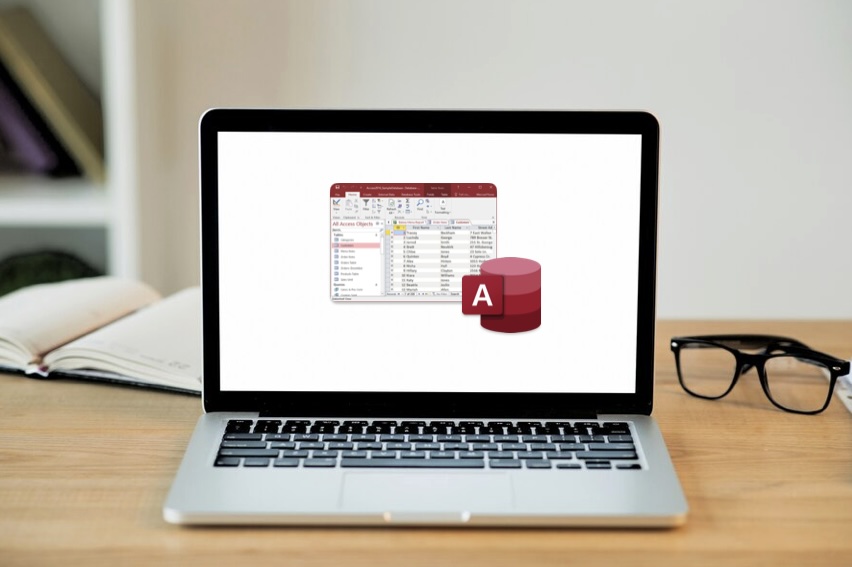Microsoft Access, a key player in the database management system arena, offers robust solutions for both individuals and teams. If you’re exploring the potential of MS Access for multiple users, understanding the right strategies and settings is crucial. This guide will walk you through the necessary steps to enable smooth, simultaneous access to a database by multiple users, ensuring data integrity and enhancing collaboration.
Why Opt for MS Access with Multiple Users?
Before we dive into the how-tos, let’s explore why MS Access is a preferred choice for multi-user environments:
Scalability
Microsoft Access offers scalability features tailored to the requirements of small to medium-sized businesses. Its capacity to handle databases of up to 2 GB in size makes it suitable for projects with moderate data volumes. Additionally, Access supports up to 255 concurrent users, enabling simultaneous access and interaction with the database.
- Databases up to 2 GB: Microsoft Access efficiently manages databases of up to 2 GB in size, meeting the data needs of numerous small to medium-sized enterprises. This scalability feature ensures that businesses can store and process a substantial amount of data within the Access environment.
- Support for 255 concurrent users: Access’s capability to accommodate multiple users accessing the database simultaneously fosters collaboration and enhances productivity within teams and organizations. This feature is particularly beneficial for environments where real-time data access and collaboration are essential for decision-making and project execution.
Cost-Effectiveness
One of the significant advantages of Microsoft Access is its cost-effectiveness, especially for businesses already utilizing the Microsoft Office suite. As part of the Office suite, Access provides a financially viable option for database management, eliminating the need for additional investment in specialized software.
- Inclusion in Microsoft Office suite: Microsoft Access is bundled with the Microsoft Office suite, allowing businesses to leverage existing licensing agreements and infrastructure without incurring additional costs. This integration ensures seamless compatibility with other Office applications, facilitating data exchange and workflow integration.
- Budget-friendly solution: The accessibility of Microsoft Access through the Office suite makes it an economical choice for organizations seeking efficient database management solutions. By leveraging Access’s capabilities within the existing Office ecosystem, businesses can minimize expenses associated with acquiring and maintaining separate database management software.
User-Friendly Interface
Microsoft Access stands out with its user-friendly interface, designed to cater to users with varying levels of technical expertise. Its intuitive tools and familiar layout empower non-developers to manage databases efficiently, without the need for extensive programming knowledge or IT support.
- Intuitive design: Microsoft Access features an interface that is easy to navigate, with intuitive tools and functionalities that streamline database management tasks. Users can quickly locate and utilize the necessary tools for creating, modifying, and querying databases, enhancing overall usability and efficiency.
- Accessibility for non-developers: The user-friendly nature of Microsoft Access enables individuals without deep technical knowledge to participate in database management tasks effectively. With Access’s intuitive interface and built-in templates, users can create and customize databases to suit their specific needs, promoting greater autonomy and collaboration across departments.
By leveraging the scalability, cost-effectiveness, and user-friendly interface of Microsoft Access, businesses can effectively manage their database requirements and enhance productivity in a multi-user environment.
Setting Up MS Access for Multiple Users

Transforming your MS Access database to accommodate multiple users involves several key steps:
Step 1: Splitting the Database
To initiate the process, it’s imperative to separate the database into two primary components: the back-end and the front-end.
| Component | Description |
| Back-End Database | This component houses the core data tables and resides on a shared network location accessible to all users. It serves as the repository for raw data, ensuring consistency and centralization. |
| Front-End Database | The front-end encompasses all interface elements such as queries, forms, and reports. Each user maintains their own copy of the front-end on their local workstation, providing a personalized interface for data interaction. |
- Open your database in Microsoft Access.
- Navigate to Database Tools and select Access Database from the Move Data group.
- Click on Split Database and follow the prompts to designate a network location for the back-end file.
Step 2: Configuring Network Access
Proper configuration of network access is pivotal to ensure seamless interaction with the back-end database while safeguarding against data corruption.
| Concept | Description |
| Network Permissions | It’s imperative to ensure that the network location hosting the back-end database has appropriate read and write permissions configured for all intended users. Restrictive access controls can help prevent unauthorized modifications and maintain data integrity. |
Step 3: Linking the front end to the back end
Once the database components are split, each user’s front-end database must be linked to the back-end database to facilitate data retrieval and updates.
- Open the front-end database on the user’s workstation.
- Navigate to External Data and select Linked Table Manager.
- Choose the relevant tables to link and specify the location of the back-end database file on the network. Establishing these connections ensures that the front-end interfaces seamlessly interact with the centralized data repository.
Step 4: Optimizing Performance
To maintain optimal performance and mitigate potential issues, it’s essential to implement various optimization measures.
- Regular Maintenance: Perform routine tasks such as compact and repair operations to optimize database performance and reduce file bloat. Regular maintenance helps eliminate unnecessary data and optimize database resources, thereby enhancing overall efficiency.
- Limit Simultaneous Writes: Design forms and applications in a manner that reduces the likelihood of multiple users attempting to write data to the same record simultaneously. Implementing proper concurrency control mechanisms can help prevent data conflicts and maintain data consistency across multiple users.
Advanced Techniques for Enhancing Multi-User Access in MS Access
To further refine your MS Access setup for multiple users and ensure even smoother operations, consider integrating the following advanced techniques into your database management strategy.
Leveraging Temporary Tables
Temporary tables can significantly enhance performance in a multi-user environment. These tables are used to store data temporarily during complex queries or batch processes. By using temporary tables, you can reduce the load on the main tables, which minimizes locking conflicts among users.
- Create a local temporary table in the front-end database.
- Use this table to perform heavy computations or preprocessing of data.
- Update the back-end database in batches to reduce network traffic and improve response times.
Implementing Row-Level Locking
Row-level locking is crucial in preventing users from overwriting each other’s changes. MS Access typically uses page-level locking, but configuring it to use row-level locking can make a significant difference in reducing record locking issues.
- Open the back-end database.
- Go to File, select Options, and then Client Settings.
- Under the Advanced section, find the Default Record Locking and select No Locks.
- Check the box for Open databases using record-level locking.
Optimizing Queries for Multi-User Access
Well-optimized queries can improve the performance and responsiveness of your database. Ensure that your queries are efficient and only retrieve the necessary data to reduce network load and database processing times.
- Use indexed fields in your queries to speed up data retrieval.
- Avoid using SELECT * statements; instead, specify only the columns you need.
- Use query criteria to filter data as much as possible on the server side before data is transmitted over the network.
Regular Monitoring and Audits
Regular monitoring of how the database is accessed and used by multiple users can help you identify performance bottlenecks and security vulnerabilities. Setting up a monitoring system to track usage patterns, access logs, and system performance metrics will enable proactive management of your database environment.
- Implement logging of user activities within the database.
- Use performance monitoring tools provided by the Windows Server or third-party applications to monitor database performance.
- Regularly review access logs and query performance metrics to identify and address issues.
Use of Forms and Reports to Control Data Access
Creating user-specific forms and reports that control data access can minimize the risk of accidental data modification and improve data integrity. Custom forms allow you to enforce data validation rules and user permissions, ensuring that users only interact with data they are authorized to view or edit.
- Design forms with user role checks to display data based on the user’s permissions.
- Use reports to provide read-only data insights to users who do not need edit capabilities.
Best Practices for MS Access in a Multi-User Environment

When managing Microsoft Access databases in a multi-user environment, it’s crucial to implement best practices to ensure data integrity, minimize errors, and optimize performance. Here are some key strategies to consider:
Use Transactional Processing
Transactional processing is essential in a multi-user environment to maintain data integrity when multiple users are accessing and modifying the database simultaneously. Transactions allow you to group database operations into atomic units, ensuring that either all operations within the transaction are completed successfully or none of them are.
In Access, you can use transactions within VBA (Visual Basic for Applications) code by utilizing the BeginTrans, CommitTrans, and Rollback methods. Here’s a basic example of how transactions can be implemented:
Dim db As Database
Dim rst As Recordset
Set db = CurrentDb
db.BeginTrans
' Perform database operations here
If Not YourCondition Then
db.Rollback
Else
db.CommitTrans
End If
Set db = NothingBy encapsulating related database operations within transactions, you can ensure that changes are applied consistently and reliably, even in a multi-user environment.
Implement Error Handling
Error handling is critical in Access applications, particularly in a multi-user environment where concurrent access can lead to conflicts and errors. Proper error handling helps to identify and manage database errors effectively, ensuring that users are notified of any issues and that the database remains stable.
In Access, you can implement error handling using the On Error statement in VBA code. By anticipating potential errors and implementing appropriate error-handling routines, you can gracefully handle unexpected situations and prevent data loss or corruption. Here’s an example of error handling in VBA:
Sub YourSubroutine()
On Error GoTo ErrorHandler
' Your code goes here
Exit Sub
ErrorHandler:
MsgBox "An error occurred: " & Err.Description, vbExclamation
Resume Next
End SubBy including error handling in your Access applications, you can improve the user experience and minimize disruptions caused by unexpected errors.
Educate Users
One of the most effective ways to ensure the smooth operation of an Access database in a multi-user environment is to educate users on best practices and proper usage. Many data integrity issues and errors can be prevented by training users to use the system correctly and avoid common pitfalls. Consider providing comprehensive training sessions or documentation covering topics such as:
- Navigating the database interface
- Entering and editing data
- Using forms and reports
- Understanding data relationships and dependencies
- Following established procedures for data entry and modification
By educating users on how to interact with the database safely and efficiently, you can reduce the likelihood of errors, data corruption, and inadvertent data deletion.
Conclusion
By following these steps and tips, you can effectively set up and manage an MS Access database for multiple users. This not only enhances productivity but also ensures that your data remains secure and integral across various operations. Whether you’re managing client information, tracking inventory, or maintaining employee records, MS Access provides a versatile platform to meet your database needs efficiently.
FAQ
A1: MS Access can support up to 255 concurrent users, but performance is optimal with fewer than 100.
A2: Directly, no. MS Access is designed for LANs. However, you can use it over the internet by setting up a VPN or using Remote Desktop Services.
A3: Common issues include record locking, database corruption, and conflicts from simultaneous data edits. Proper setup and maintenance can mitigate most of these issues.
A4: While MS Access has security features, it’s recommended to implement additional security measures, especially in multi-user environments, such as network security protocols and encrypted connections.
A5: Ensure all users have appropriate network permissions, check the network’s health, and verify that the back-end database is not corrupted.




